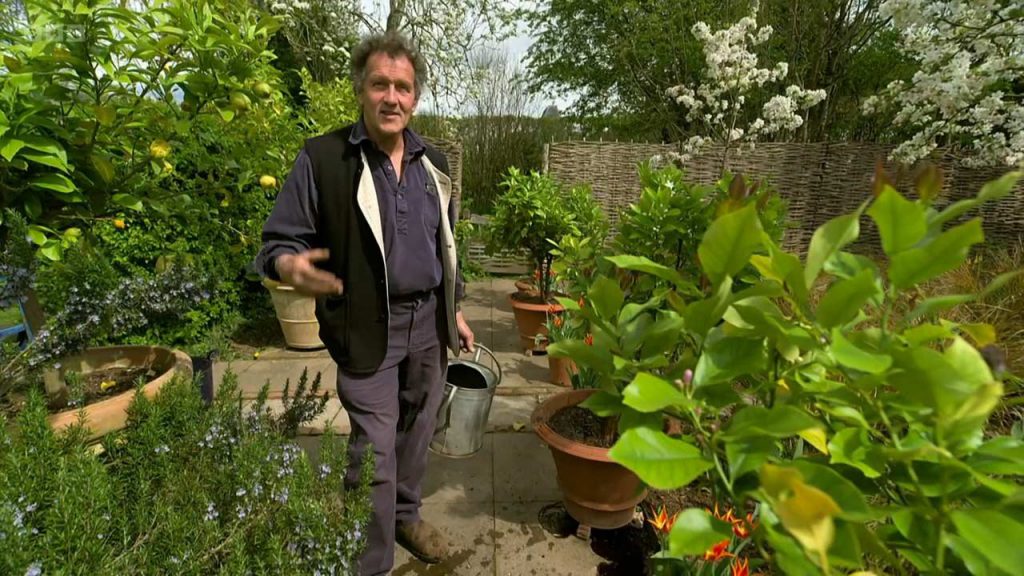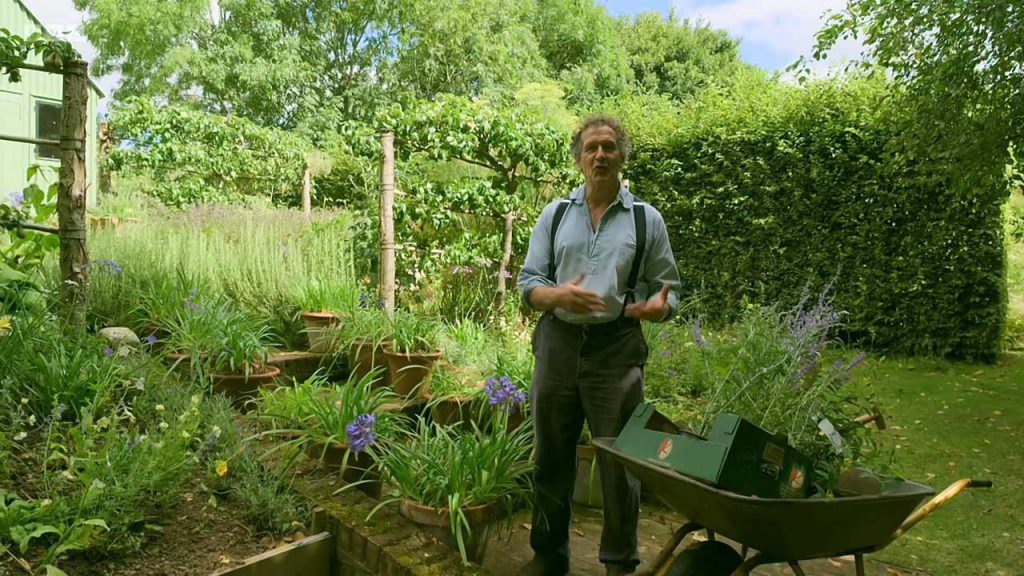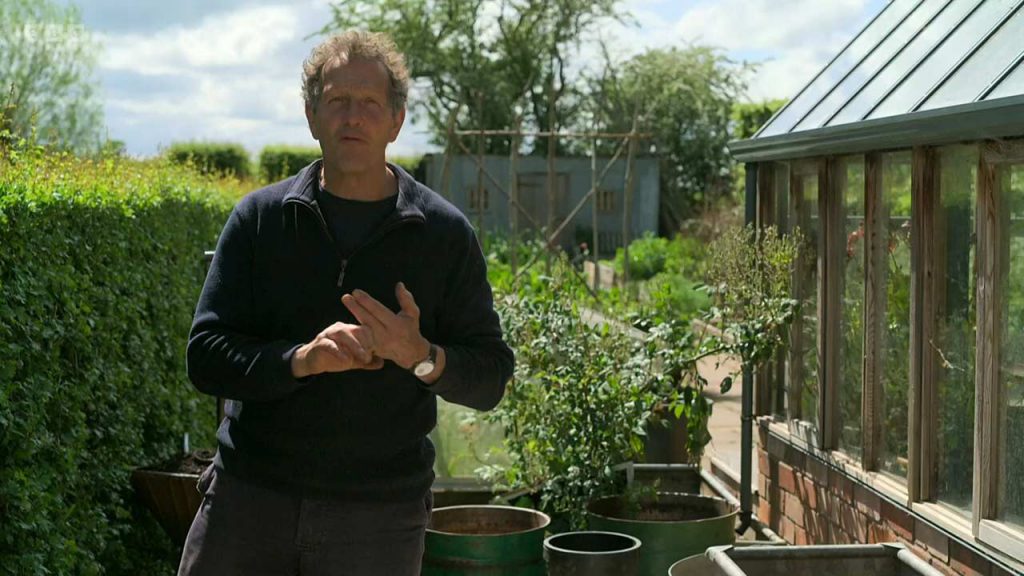Gardeners World 2023 – Compilations episode 3: Monty Don grows a plant he’s never tried before – loofahs. He also celebrates some of his favourite tulip combinations and plants out crocosmia. Joe Swift visits a garden, created by an award-winning designer, where contemporary and traditional meet in perfect harmony, and Nick Bailey is in Dorset showcasing perennial plants that bring late summer colour to borders. There’s a look at the curious array of vegetables on Rekha Mistry’s allotment, and Advolly Richmond discovers a stunning Japanese-inspired garden in Clackmannanshire.
There’s also a grower who adores all kinds of citrus plants and a gardener who has created his own plant paradise indoors. Plus a look at viewers’ films from their own gardens.
Gardeners’ World is a long-running British gardening programme that started on 5 January 1968. It was described as “a weekly series for gardeners, advanced and beginners, throughout the British Isles”. It picked up where its forerunner – Gardening Club – left off, and also featured that programme’s much loved presenter, the knowledgeable and down-to-earth Percy Thrower. The programme covers various aspects of gardening, such as plants, wildlife, design, techniques, tips and advice. It also features visits to gardens around the country and interviews with experts and enthusiasts.
The current main presenter is Monty Don, who hosts the show from his own garden in Herefordshire. He is joined by other regular presenters such as Carol Klein, Adam Frost, Arit Anderson, Frances Tophill and Nick Bailey. Gardeners’ World is a popular and influential programme that celebrates the joy of gardening and inspires people to create beautiful and productive gardens of their own.
Gardeners World 2023 – Compilations episode 3
Ornamental grasses
The variations in colour and texture of ornamental grasses provide structure, movement and interest in planting schemes, even in the dead of winter. Usually partnered with late summer perennials, grasses provide a long season of interest.
Ornamental grasses are a popular addition to gardens and landscapes around the world. These versatile plants offer a wide range of benefits, including low maintenance, year-round interest, and a variety of colors and textures. One of the biggest advantages of ornamental grasses is their adaptability. They are able to thrive in a range of soil types and can tolerate both wet and dry conditions. This makes them an ideal choice for a variety of landscapes, from urban gardens to rural meadows.
When it comes to design, ornamental grasses can be used in a variety of ways. They can be planted in groups or used as a focal point in a garden bed. They can also be used to create natural-looking borders or to add height and texture to a landscape. In addition to their aesthetic appeal, ornamental grasses can also provide a range of environmental benefits. They can help to prevent soil erosion, provide food and shelter for wildlife, and reduce the need for chemical fertilizers and pesticides.
If you’re considering adding ornamental grasses to your landscape, there are a few things to keep in mind. Choose a species that is well-suited to your climate and soil conditions, and be sure to provide adequate water and nutrients during the plant’s establishment period. With a little bit of care, your ornamental grasses will thrive and provide years of beauty and enjoyment.
Citrus – Gardeners World 2023 – Compilations episode 3
Oranges, lemons and limes are great container specimens, making it easy to enjoy the flavour and sweet scent of citrus in any garden. Overwintering them successfully is easy in a frost-free place, such as a greenhouse or conservatory. Citrus trees are a popular choice for gardeners due to their vibrant foliage and delicious fruits. However, they require specific care to thrive. In this article, we’ll provide you with some cultivation notes for citrus trees, including watering and feeding tips.
First and foremost, citrus trees require well-draining soil. They don’t tolerate standing water, so be sure to plant them in an area where water won’t accumulate. Additionally, citrus trees need regular watering. In general, they require about 1-2 inches of water per week, either from rainfall or irrigation. During hot, dry weather, you may need to water more frequently. Just be sure to avoid overwatering, as this can lead to root rot. When it comes to feeding citrus trees, they require a balanced fertilizer with equal amounts of nitrogen, phosphorus, and potassium. You can find citrus-specific fertilizers at your local garden center. Fertilize your citrus trees three times a year: in late winter, late spring, and mid-summer. Avoid fertilizing during the fall, as this can encourage new growth that may be damaged by winter cold.
It’s also worth noting that citrus trees require regular pruning to maintain their shape and encourage fruit production. Prune your trees in late winter or early spring before new growth begins. Remove any dead, diseased, or crossing branches, and thin out any crowded areas to improve airflow. Citrus trees require well-draining soil, regular watering, balanced fertilization, and regular pruning to thrive. Follow these cultivation notes, and your citrus trees will reward you with beautiful foliage and delicious fruit.
How to grow tulips
Planted as bulbs, tulips provide spring flowers in dazzling colours and flower shapes. Grow them in borders, rock gardens and containers before summer flowers appear. Specialist tulips related to wild species often multiply in gardens. Growing tulips is a popular activity among gardeners due to their colorful and attractive blooms. Tulips can brighten up any garden with their vibrant hues and unique shapes. Here are some tips on how to grow tulips and ensure that they thrive in your garden.
- Plant at the right time: Tulips should be planted in the fall, between September and December, before the ground freezes. This allows the bulbs to establish roots and prepares them for spring blooming.
- Choose the right location: Tulips prefer well-draining soil and full sun exposure. Make sure to choose a spot that receives at least six hours of direct sunlight daily.
- Prepare the soil: The soil should be loose and fertile, with a pH between 6.0 and 7.0. Add organic matter such as compost or well-rotted manure to improve soil quality.
- Plant bulbs properly: Tulip bulbs should be planted about 6 inches deep and 4-6 inches apart. Ensure that the pointed end of the bulb faces upward.
- Water and fertilize: Tulips require regular watering, especially during dry spells. Fertilize with a balanced fertilizer in the fall and again in the spring after flowering.
- Deadhead: After the tulips have finished blooming, remove the flower heads to prevent them from going to seed. This encourages the plant to put energy into bulb growth instead of seed production.
By following these simple tips, you can successfully grow tulips in your garden. With a little care and attention, your tulips will provide a stunning display of color year after year.




